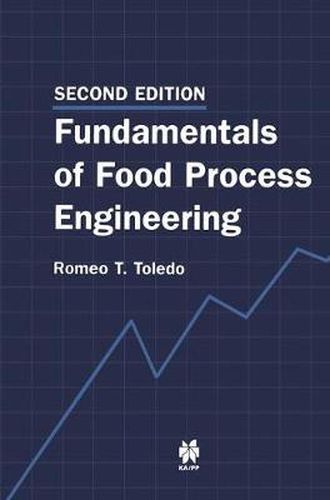Readings Newsletter
Become a Readings Member to make your shopping experience even easier.
Sign in or sign up for free!
You’re not far away from qualifying for FREE standard shipping within Australia
You’ve qualified for FREE standard shipping within Australia
The cart is loading…






This title is printed to order. This book may have been self-published. If so, we cannot guarantee the quality of the content. In the main most books will have gone through the editing process however some may not. We therefore suggest that you be aware of this before ordering this book. If in doubt check either the author or publisher’s details as we are unable to accept any returns unless they are faulty. Please contact us if you have any questions.
Ten years after the publication of the first edition of Flllldmntntais of Food Process Engineering, there have been significant changes in both food science education and the food industry itself. Students now in the food science curric ulum are generally better prepared mathematically than their counterparts two decades ago. The food science curriculum in most schools in the United States has split into science and business options, with students in the science option following the Institute of Food Technologists’ minimum requirements. The minimum requirements include the food engineering course, thus students en rolled in food engineering are generally better than average, and can be chal lenged with more rigor in the course material. The food industry itself has changed. Traditionally, the food industry has been primarily involved in the canning and freezing of agriCUltural commodi ties, and a company’s operations generally remain within a single commodity. Now, the industry is becoming more diversified, with many companies involved in operations involving more than one type of commodity. A number of for mulated food products are now made where the commodity connection becomes obscure. The ability to solve problems is a valued asset in a technologist, and often, solving problems involves nothing more than applying principles learned in other areas to the problem at hand. A principle that may have been commonly used with one commodity may also be applied to another commodity to produce unique products.
$9.00 standard shipping within Australia
FREE standard shipping within Australia for orders over $100.00
Express & International shipping calculated at checkout
This title is printed to order. This book may have been self-published. If so, we cannot guarantee the quality of the content. In the main most books will have gone through the editing process however some may not. We therefore suggest that you be aware of this before ordering this book. If in doubt check either the author or publisher’s details as we are unable to accept any returns unless they are faulty. Please contact us if you have any questions.
Ten years after the publication of the first edition of Flllldmntntais of Food Process Engineering, there have been significant changes in both food science education and the food industry itself. Students now in the food science curric ulum are generally better prepared mathematically than their counterparts two decades ago. The food science curriculum in most schools in the United States has split into science and business options, with students in the science option following the Institute of Food Technologists’ minimum requirements. The minimum requirements include the food engineering course, thus students en rolled in food engineering are generally better than average, and can be chal lenged with more rigor in the course material. The food industry itself has changed. Traditionally, the food industry has been primarily involved in the canning and freezing of agriCUltural commodi ties, and a company’s operations generally remain within a single commodity. Now, the industry is becoming more diversified, with many companies involved in operations involving more than one type of commodity. A number of for mulated food products are now made where the commodity connection becomes obscure. The ability to solve problems is a valued asset in a technologist, and often, solving problems involves nothing more than applying principles learned in other areas to the problem at hand. A principle that may have been commonly used with one commodity may also be applied to another commodity to produce unique products.